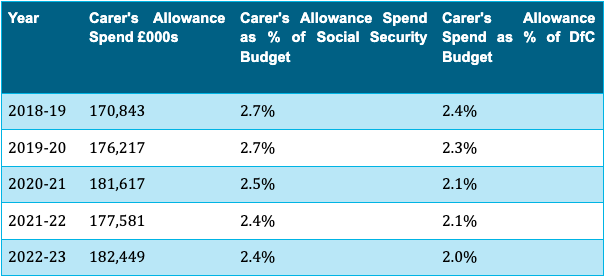Angela Ferguson & PA News,
 ReutersTeenage girls who are unpaid carers on Merseyside are expected to spend a longer time caring than others across the UK
ReutersTeenage girls who are unpaid carers on Merseyside are expected to spend a longer time caring than others across the UKTeenage girls in a town on Merseyside face spending almost a decade of their lives as an unpaid carer in the future, new figures have revealed.
The Office for National Statistics (ONS) has reported that young unpaid carers in St Helens can expect to spend as much as nine and a half years of their lives in the role.
Nationally the figure is an average of almost eight years, and it is just over five years for teenage boys who are unpaid carers.
The Carers Trust said the "alarming figures" showed how women and girls were "disproportionately shouldering the pressures of caring".
Unpaid carers, also referred to as informal carers, provide care to anyone because of long-term physical or mental ill-health or disability, or care needs relating to old age.
The new figures looked at the average number of years people who are expected to provide unpaid care beyond their current age between 2020 and 2022.
The top six areas for teenage girls with the highest number of years are:St Helens, Merseyside - 9.6 years
Halton, Cheshire - 9.2 years
Torbay, Devon - 9.2 years
Knowsley, Merseyside - 9.1 years
Wirral, Merseyside - 9.1 years
Sunderland - 9.1 years
The boys' list also includes many of the same areas:St Helens, Merseyside - 6.7 years
Knowsley, Merseyside - 6.7 years
Halton, Cheshire - 6.6 years
Sefton, Merseyside - 6.3 years
Sunderland, Tyne and Wear - 6.3 years
Telford, Shropshire - 6.3 years
Wrekin, Shropshire - 6.3 years
Torbay, Devon - 6.3 years
Wirral, Merseyside - 6.3 years
'Health and wellbeing'
While St Helens had the highest number for teenage girls, the lowest was in the London borough of Hammersmith and Fulham, at 5.6.
Similarly, for older people, women were found to face more time as an unpaid carer.
For people aged 50 between 2020 and 2022, women can expect to spend 4.7 years of their remaining lives providing unpaid care, while men face about 3.5 years of unpaid care.
Josephine Foubert, from the ONS, said the new analysis "shines a light on the health and wellbeing of unpaid carers".
Ramzi Suleiman, from the Carers Trust, called for action to be taken, adding: “These alarming figures show how women are disproportionately shouldering the pressures of caring."
The ONS said the figures were calculated by combining data on unpaid care collected in Census 2021, with death counts and mid-year population estimates.
19 April 20243 minute read
SUBJECT
CLAIM: Unpaid carers provide the equivalent of hundreds of millions of pounds of work every year, while the Department of Communities spends only 2% of its budget on Carer’s Allowance.
- The Department for Communities spends 2% of its budget each year on Carer’s Allowance (£182m)
- Over one in eight of the population in Northern Ireland provide unpaid care
- By any reasonable estimate, the economic value of unpaid care in Northern Ireland comes is easily worth hundreds of millions – if not billions – of pounds every year
On 28 February in a post on social media, Carers NI public affairs manager Craig Harrison claimed:
“2%… That’s the amount of DfC’s budget spent on Carer’s Allowance. In return, those carers save Stormont £100s millions in care costs every year.”
This is accurate.
Official figures state that the Department of Communities (DfC) spent £182.4 million – 2% of its budget – on Carer’s Allowance in the most recent year, and that this proportion is similar to other recent years.
Estimates for the total value of unpaid caring in Northern Ireland come to billions of pounds. Even a deliberate underestimate, calculated by FactCheckNI, resulted in a value of almost £1bn.
Given DfC spending is under £200 million, it is fair to suggest that unpaid caring saves Stormont hundreds of millions annually.
- Carers’ Allowance
Minister for Communities Gordon Lyons recently outlined his department’s spending on Carer’s Allowance in response to a written question from UUP MLA Andy Allen.

Figure 1 – source: Northern Ireland Assembly
Spending for the most recent year – 2022-23 – was around £182.4 million, which amounted to 2.0% of DfC spending that year. This was not an outlier year, with all spending on carer’s allowance since 2018-19 being under 2.5% of the total DfC budget.
Figures for spending on carer’s allowance in Northern Ireland can also be sourced from the annual reports published each year by the Department for Communities.
This supports the first aspect of the claim made by Mr Harrison.
- Caring economy
The 2021 census for Northern Ireland found that around 222,000 people here provide unpaid care. This represents 12.4% or just over one in eight of the population aged five or over. Around 97,000 people (5.4% of the over-five population) provide more than 35 hours of care per week.
By comparison, in England and Wales, 9.0% of the population provide unpaid care.
A report published by Carer’s NI sought to calculate the economic value of unpaid care in Northern Ireland by multiplying the hours spent on unpaid care in Northern Ireland with the hourly unit cost for replacement care across each Health and Social Care Trust area in Northern Ireland. Using this methodology, the report authors found that unpaid carer’s support in Northern Ireland was worth £5.8 billion in 2021, an increase in real terms of 42% from 2021.
A 2018 report by the International Labour Organization estimated that if unpaid care was valued at the minimum wage worldwide, it would amount to 9% of global GDP. From regional GDP figures published by the ONS, the GDP of Northern Ireland in 2021 was £51.7 billion.
By looking in more detail at figures from the census, it is possible to make a simple calculation that provides an underestimate or basement figure for the value of caring work in Northern Ireland. According to the census, the number of people aged 5+ who provide a certain amount of caring every week is:

Figure 2 – source: NI Census 2021
If we assume everyone in this cohort only spends the minimum amount of time in their band to provide care, we can see that the minimum amount of total care per week here is:
(100,777 x 1) + (24,636 x 20) + (28,109 x 35) + (68,691 x 50) = 5,011,862
Multiplying that by 52, this equates to 260,616,824 caring hours per year.
In Northern Ireland, the minimum wage varies by age. For most people, it is £10.42 per hour but it can be as low as £5.28 per hour (for under 18s and apprentice workers). Assuming that caring is valued at the lowest-possible figure, the minimum annual value for caring in NI becomes:
260,616,824 x £5.28 = £1,376,056,830.72
Even this strict underestimate places a floor on the annual value of caring in NI at somewhere approaching £1.4 billion.
When all of these estimates are considered, and given Stormont pays out less than £200 million per year on Carer’s Allowance, it is accurate to suggest that unpaid caring saves Stormont hundreds of millions of pounds every year.




